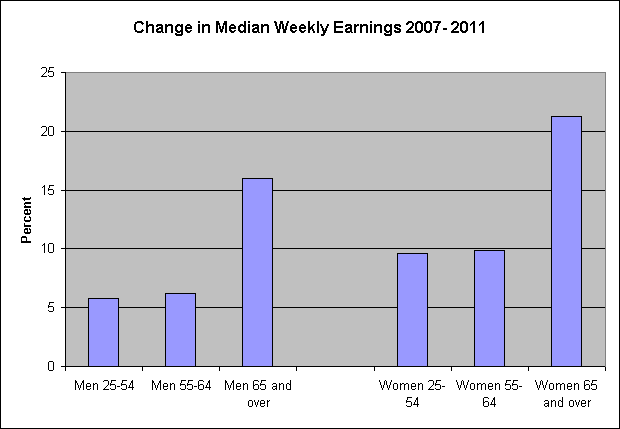July 20, 2011
The NYT featured another Casey Mulligan episode of There Is No Unemployment this morning. Mulligan’s argument is that if we look at employment rates for the older population we see that they have actually risen in the downturn even as employment for people ages 25-55 plummeted. Mulligan interprets this as evidence that highly motivated older workers are able to find jobs, and if younger workers were equally motivated they would find jobs too.
This is an interesting story. The rise employment rates of older workers is a striking story in this downturn and one that I and others have often noted. However, there are other possible interpretations. Older workers almost by definition will have more experience than their younger counterparts. Employers tend to fire less experienced workers with less job tenure first. (Just as they tend to fire less-educated workers first.) This could lead to the pattern of lower employment rates among younger workers that we are seeing without having any direct relationship to the commitment of workers to the labor force.
There is a simple way to try to test this story. We can look at patterns in wage growth since the downturn. If Mulligan’s story is right then we might expect to see the wages of older workers rise less rapidly than for younger workers. (These are nominal wages.) The idea is that the desperate older workers are willing to take big pay cuts to keep or get a job, while the young whipersnappers would rather lounge around on the couch watching TV.
The chart below shows the change in median weekly earnings between 2007 and the average of last four quarters (2010:3-2011:2) for men and women between the ages of 25-54, 55-64, and over age 65.
(Click for Larger Image)
Source: Bureau of Labor Statistics.
As can be seen, median weekly earnings rose slightly more rapidly for both men and women in the 55-64 age cohort than in the 25-54 group. They rose much more rapidly for over the 65 age group. There is not much evidence here of older workers who are desperately looking for jobs and willing to make whatever sacrifice is necessary. In other words, this is consistent with the demand side story where employers dump their younger workers first while holding on to older workers, so there are no jobs for the under 55 set.
It is the same story as with more highly educated workers. College educated workers saw less of a fall in employment than less-educated workers. However, this does not mean that less-educated workers could find jobs if they really want them, nor that there are even jobs for every college-educated worker who wants them.








Comments